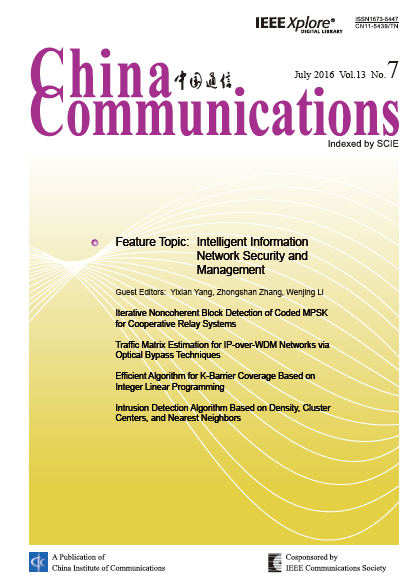Fei Zheng, Wenjing Li*, Luoming Meng, Peng Yu, Lei Peng
2016, 13(7): 39-47.
To reduce the energy consumption of the LTE-A system, a distributed energy-saving mechanism based on CoMP (CoMP-DESM) is proposed to solve the inadequate coverage problem under the dormant cells. First, the network is divided into clusters based on the equivalent cell principle. Then, we transfer global optimization into a group of subproblems. Second, a joint processing-based cooperative cell selection model is constructed to determine cooperative cells and dormant cells. Third, the compensative cells with a determined threshold are selected to control users’ access. Finally, a simulation is implemented in Matlab. Results show that the energy-saving rate can reach 36.4% and that the mechanism meets the network coverage requirement. Thus, joint processing can be effectively applied in an energy saving mechanism and used to improve the network performance of edge users without increasing transmission power.
